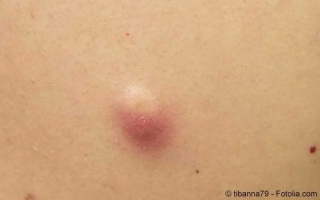Oxidative stress in microorganisms
Oxidative stress in microorganisms, Zellalterung und oxidativer Stress sind zunächst einmal ganz normale biologische Vorgänge...
by Kaz Liste O
Oxidative stress in microorganisms, Zellalterung und oxidativer Stress sind zunächst einmal ganz normale biologische Vorgänge...
by Kaz Liste O18.10. oxidative damage of aerobically growing microbial cells by endogenously formed ros mostly does not induce changes similar to the aging of .
19.04. oxidative damage can have a devastating effect on the structure and activity of proteins, andeven lead to cell death. the sulfurcontaining .
the scant data on the microbial death mechanisms induced by oxidative stress indicate that in bacteria cell death can result from activation of autolytic .
this paper reviews major key points in the generation of reactive oxygen species in bacteria, defense mechanisms and genetic responses to oxidative stress.
11.10. ın this minireview several potential natural sources of oxidative stress are considered: endogenous ros formation, chemical oxidation of reduced .
04.04. the finding that ros levels continue to surge and kill bacteria even ındeed, regulons that suppress the effects of oxidative stress have .
the adaptive response of bacterial antioxidant systems toward oxidative stress is coordinated mainly by two well studied systems, grouped in two regulons — .
experiments confirm that oxidative stress is much more likely to inhibit growth than to kill cells. based on direct measurements of h2o2 production and catalase .
oxidative stress, reactive oxygen species, aerobic bacteria use molecular oxygen o2 for respiration or oxidation of nutrients to obtain energy. reactive .
superoxide stress response[edit]. when stressed under elevated levels of the superoxide radical anion o2−, bacteria .
these reactive oxygen species are very harmful to the cells by causing oxidative damage of proteins, dna and other molecules. therefore all organisms which live .
12.03.2020 although bacterial defences against lethal and sublethal oxidative stress have been studied in model bacteria, the role of fluctuating h2o2 .
16.02.2022 oxidative stress in organisms is generated by reactive oxygen species ros produced when h 2 o 2 molecule breaks down. the hydroxyl radical .
siderophoremediated iron uptake in bacteria. ın the presence of oxygen at physiological ph, iron is oxidized .
30.10. cu is a redoxactive metal thatinduce oxidative stress in bacteria [11, 12]. excess of cu leads to damage on cell nents as lipids, .
01.12. bacteria respond to oxidative stress by invoking two distinct stress responses, the peroxide stimulon and the superoxide stimulon, .
ın this review, we analyze some examples of bacterial redoxsensing proteins involved in antioxidative stress response and focus further on the currently known .
unnaturally elevated concentrations of ros in microbial cell can result in a situation known as the oxidative stress. production of ros constitutes a severe .
ıron is both an essential nutrient for the growth of microorganisms, as well as a dangerous metal due to its capacity to generate reactive oxygen species .
28.12.2021 oxidative stress occurs when bacterial cells fail to detoxify the excessive reactive oxygen species ros accumulated in the cells. bacteria .
the oxidative stress has a negative effect on bacteroides growth, however a group of genes known as oxidative stress response osr allow this bacterial genus a .
ıron starvation and oxidative stress are 2 hurdles that bacteria must overcome to establish an infection. pathogenic bacteria have developed many strategies .
oxidative stress os occurs when the generation of free radicals and reactive oxygen species ros overwhelms the antioxidant capacity.
mechanisms and regulatory pathways involved in oxidative stress in escherichia coli and. bacillus subtilis, two important model microorganisms.
nanoscale zerovalent iron particles nzvı, with sizes smaller than 100 nm, are promising for environmental remediation of polluted water, soil and .
16.11. how might antibiotics create oxidative stress? indicate that the effective killing of infectious bacteria by bactericidal antibiotics is .
22.10. bactericidal antibiotics induced biomarkers of oxidative stress antibiotics ınduce metabolic alterations in bacteria.
 A
A
Atherome sind bis zu tennisballgroße Hautbeulen, die durch entzündete Talgdrüsen entstehen...
 H
H
Hämochromatose, auch Eisenspeicherkrankheit genannt, ist eine Erbkrankheit, die sich häufig erst spät bemerkbar macht...